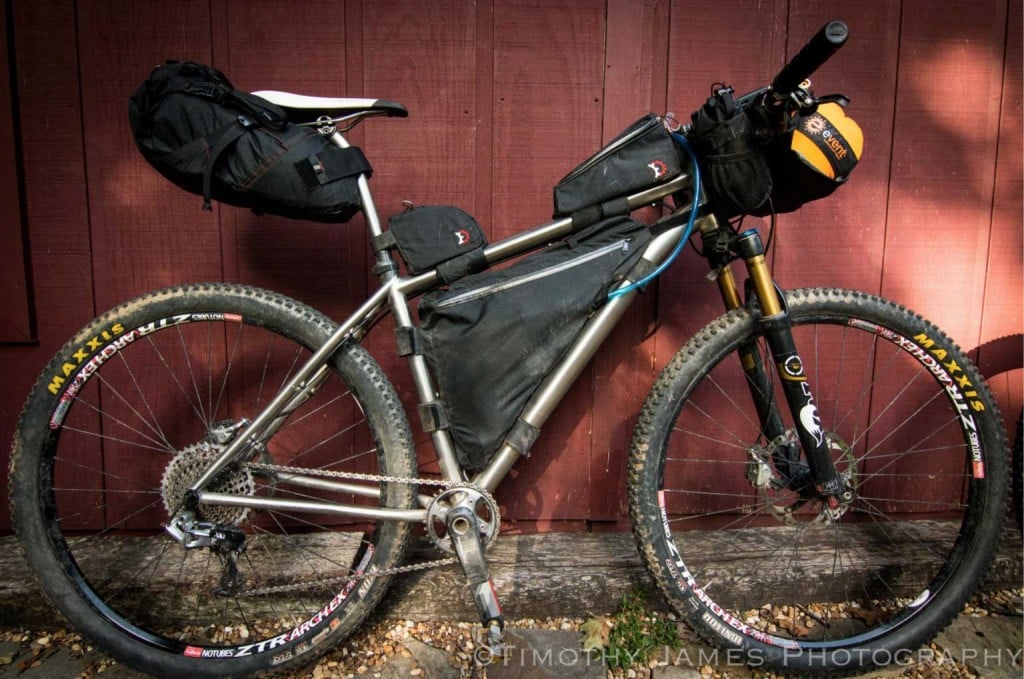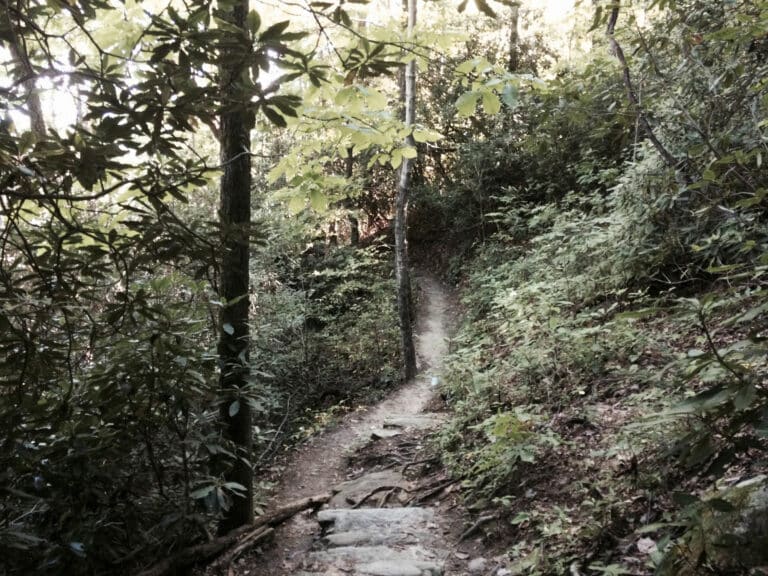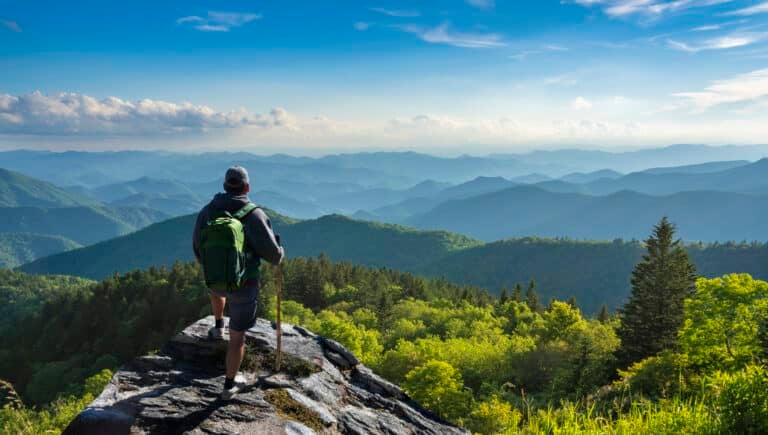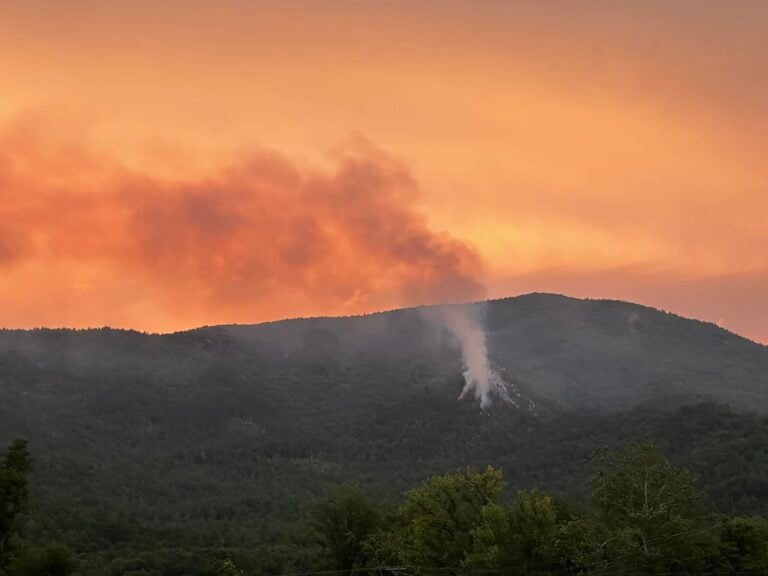After a long day of hard miles and ecstasy-inducing descents, nothing seduces mountain bikers more easily than a cold beer, a warm shower, and a soft bed. But sometimes we feel that relentless tug toward novelty. We want something raw and adventurous, so we go bikepacking. Go farther, faster, and see places others seldom do with these five prime bikepacking destinations.
Pisgah Ranger District (NC) Iconic sites, like Looking Glass Rock, and epic singletrack trails abound in Brevard’s backyard. Start at North Mills River, work your way down to Brevard, and circle back. Cherry pick some the most fun singletrack in the Southeast along the way: Laurel Mountain, Pilot Rock, Cantrell Creek, Mullinax, Squirrel Gap, South Mills River, Buckhorn Gap, Black Mountain, Avery Creek, Bennet Gap, and more. “You’ll do some fire roads, but most of the time you’re going to be on good singletrack,” Justin Miles of Sycamore Cycles said. There is a three-sided shelter with a number of bunks at Buckhorn Gap. In the morning you’ll decide between three riotously fun descents on either Black Mountain, Avery Creek, or Bennet Gap. You can check out the trails around the fish hatchery, hit up Bracken Mountain, or even make a short pedal to “The Hub” at the forest entrance for a beer before heading back to North Mills River.
Trans North Georgia (GA) – The TNGA is a hearty expedition through the southern tip of Appalachia. Beginning at the South Carolina border, near Clayton, GA, it’s a 350-mile journey with 56,000 feet of climbing. Trace the Tallulah River, romp through the Cohutta Mountains, slash singletrack at Bear Creek, and absorb local color at stopovers in Ellijay, Helen, Dillard, Blue Ridge, and Dalton. Mulberry Gap Mountain Bike Getaway lies along the route and offers a real treat for woods-weary riders. That’s as far as the coddling goes though. Since its completion in 2004, the TNGA has punished riders with an unholy amount of steep forest roads. 60-70 miles a day is a reasonable pace, so plan to dedicate a week to the expedition. Riding trail through Georgia and Alabama promises an experience that is as gritty as it is rewarding. Don’t forget to hire a shuttle!
Spruce Knob Recreation Area (WV) – Get high in the mountain state in a short weekend. Churn your way up fire-service roads to the summit of Spruce Knob. At 4,863 feet, it’s the highest summit in West Virginia. Enjoy rocky, pine-clad vistas, more common to colder climes like Maine or Colorado, before a wild descent on Huckleberry Trail. As you roll into deciduous groves and meadows, rest your nerves and make an early camp at Judy Springs. Day two begets nothing but singletrack. Hit the Allegheny Trail, the North Prong, and Big Run. Find respite spotting native brook trout at Gandy Creek and a number of other burbling streams. Make camp or head back to Forest Road 112 for an early exit.
The Grandfather District (NC) –Unlike the well-trodden and easy-to-navigate trails in the Ranger District, The Grandfather District is truly primitive Pisgah. “It’s super rugged,” Shaw Brown of Boone Bikes said. “It’s just so steep.” Linking up superb rides through Yancey Ridge, Schoolhouse Ridge, Wilson Ridge, and Greentown is extremely difficult, but you’ll profit screaming descents down rhododendron tunnels. Creek crossings and 40-foot sink holes are also par for this course. Enjoy nights camped along cascading waterfalls and old growth forest. For a more straight-forward option try the nearby Linville Gorge Classic. The route is a seriously steep 50-mile loop composed entirely of forest service road. You will be free of technical challenge to be completely enamored with one of the most beautiful gorges in the southeast.
The Virginia Mountain Bike Trail (VA) – The Virginia Trail sets the standard for epic Appalachian rides. 480 miles of connectable trail leads riders from Strasburg, Virginia to Damascus, Virginia. Thus far only two groups of riders have tackled the entire distance, which includes 65,000 feet of climbing in eight major trails systems. The trail crosses almost all of Virginia’s major watersheds and the continental divide. Do not count on resupplying and prepare for a solitary experience.
“It’s a massive undertaking,” said Scott Wootten of Massanutten Bike Park just outside Harrisonburg, Virginia. “It’s a rugged bike expedition. It’s not a credit card tour.” The trails are as technical as they are remote. The VMBT is still being pioneered, and its ambassadors have visions for a hut-to-hut system. Eventually, this route will emerge on the national radar. Completing it now is a monumental task. Expect to dedicate almost two weeks to this project. For a smaller taste of the VMBT, look into a 180-mile loop from Stokesville to Douthat State Park.
Learn more about bikepacking in the September issue of Blue Ridge Outdoors Magazine.
Related:











